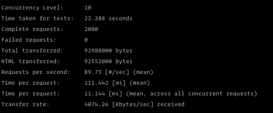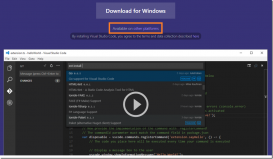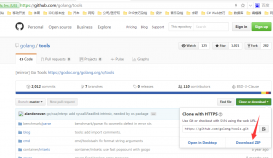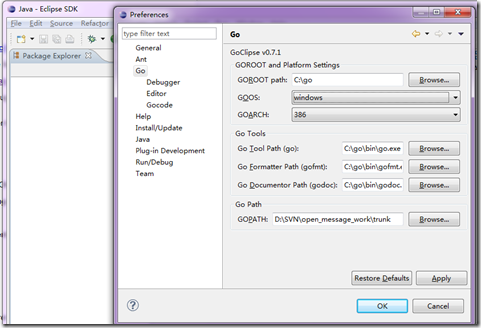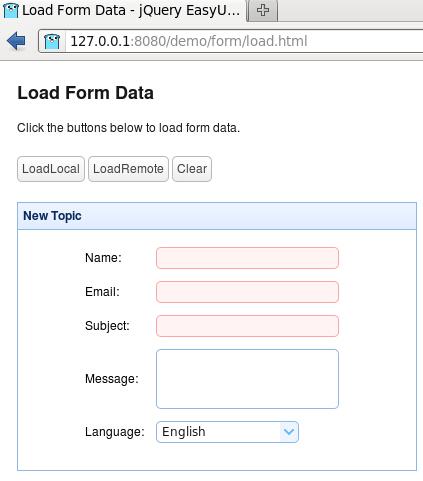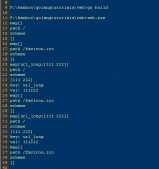前言
大家做开发的应该都知道,在开发程序中很重要的一点是测试,我们如何保证代码的质量,如何保证每个函数是可运行,运行结果是正确的,又如何保证写出来的代码性能是好的,我们知道单元测试的重点在于发现程序设计或实现的逻辑错误,使问题及早暴露,便于问题的定位解决,而性能测试的重点在于发现程序设计上的一些问题,让线上的程序能够在高并发的情况下还能保持稳定。本小节将带着这一连串的问题来讲解Go语言中如何来实现单元测试和性能测试。
go语言中自带有一个轻量级的测试框架testing和自带的go test命令来实现单元测试和性能测试,testing框架和其他语言中的测试框架类似,你可以基于这个框架写针对相应函数的测试用例,也可以基于该框架写相应的压力测试用例,那么接下来让我们一一来看一下怎么写。
如何编写测试用例
由于go test命令只能在一个相应的目录下执行所有文件,所以我们接下来新建一个项目目录gotest,这样我们所有的代码和测试代码都在这个目录下。
接下来我们在该目录下面创建两个文件:gotest.go和gotest_test.go
1、gotest.go:这个文件里面我们是创建了一个包,里面有一个函数实现了除法运算:
|
1
2
3
4
5
6
7
8
9
10
11
12
13
|
package gotestimport ( "errors")func Division(a, b float64) (float64, error) { if b == 0 { return 0, errors.New("除数不能为0") } return a / b, nil} |
2、gotest_test.go:这是我们的单元测试文件,但是记住下面的这些原则:
- 文件名必须是_test.go结尾的,这样在执行go test的时候才会执行到相应的代码
- 你必须import testing这个包
- 所有的测试用例函数必须是Test开头
- 测试用例会按照源代码中写的顺序依次执行
-
测试函数
TestXxx()的参数是testing.T,我们可以使用该类型来记录错误或者是测试状态 -
测试格式:
func TestXxx (t *testing.T),Xxx部分可以为任意的字母数字的组合,但是首字母不能是小写字母[a-z],例如Testintdiv是错误的函数名。 -
函数中通过调用
testing.T的Error, Errorf, FailNow, Fatal, FatalIf方法,说明测试不通过,调用Log方法用来记录测试的信息。
下面是我们的测试用例的代码:
|
1
2
3
4
5
6
7
8
9
10
11
12
13
14
15
16
17
|
package gotestimport ( "testing")func Test_Division_1(t *testing.T) { if i, e := Division(6, 2); i != 3 || e != nil { //try a unit test on function t.Error("除法函数测试没通过") // 如果不是如预期的那么就报错 } else { t.Log("第一个测试通过了") //记录一些你期望记录的信息 }}func Test_Division_2(t *testing.T) { t.Error("就是不通过")} |
我们在项目目录下面执行go test,就会显示如下信息:
|
1
2
3
4
5
|
--- FAIL: Test_Division_2 (0.00 seconds) gotest_test.go:16: 就是不通过FAILexit status 1FAIL gotest 0.013s |
从这个结果显示测试没有通过,因为在第二个测试函数中我们写死了测试不通过的代码t.Error,那么我们的第一个函数执行的情况怎么样呢?默认情况下执行go test是不会显示测试通过的信息的,我们需要带上参数go test -v,这样就会显示如下信息:
|
1
2
3
4
5
6
7
8
9
|
=== RUN Test_Division_1--- PASS: Test_Division_1 (0.00 seconds) gotest_test.go:11: 第一个测试通过了=== RUN Test_Division_2--- FAIL: Test_Division_2 (0.00 seconds) gotest_test.go:16: 就是不通过FAILexit status 1FAIL gotest 0.012s |
上面的输出详细的展示了这个测试的过程,我们看到测试函数1Test_Division_1测试通过,而测试函数2Test_Division_2测试失败了,最后得出结论测试不通过。
接下来我们把测试函数2修改成如下代码:
|
1
2
3
4
5
6
7
|
func Test_Division_2(t *testing.T) { if _, e := Division(6, 0); e == nil { //try a unit test on function t.Error("Division did not work as expected.") // 如果不是如预期的那么就报错 } else { t.Log("one test passed.", e) //记录一些你期望记录的信息 }} |
然后我们执行go test -v,就显示如下信息,测试通过了:
|
1
2
3
4
5
6
7
8
|
=== RUN Test_Division_1--- PASS: Test_Division_1 (0.00 seconds) gotest_test.go:11: 第一个测试通过了=== RUN Test_Division_2--- PASS: Test_Division_2 (0.00 seconds) gotest_test.go:20: one test passed. 除数不能为0PASSok gotest 0.013s |
如何编写压力测试
压力测试用来检测函数(方法)的性能,和编写单元功能测试的方法类似,此处不再赘述,但需要注意以下几点:
-
压力测试用例必须遵循如下格式,其中XXX可以是任意字母数字的组合,但是首字母不能是小写字母
1func BenchmarkXXX(b *testing.B) { ... } -
go test不会默认执行压力测试的函数,如果要执行压力测试需要带上参数
-test.bench,语法:-test.bench="test_name_regex",例如go test -test.bench=".*"表示测试全部的压力测试函数 -
在压力测试用例中,请记得在循环体内使用
testing.B.N,以使测试可以正常的运行 - 文件名也必须以_test.go结尾
下面我们新建一个压力测试文件webbench_test.go,代码如下所示:
|
1
2
3
4
5
6
7
8
9
10
11
12
13
14
15
16
17
18
19
20
21
22
23
|
package gotestimport ( "testing")func Benchmark_Division(b *testing.B) { for i := 0; i < b.N; i++ { //use b.N for looping Division(4, 5) }}func Benchmark_TimeConsumingFunction(b *testing.B) { b.StopTimer() //调用该函数停止压力测试的时间计数 //做一些初始化的工作,例如读取文件数据,数据库连接之类的, //这样这些时间不影响我们测试函数本身的性能 b.StartTimer() //重新开始时间 for i := 0; i < b.N; i++ { Division(4, 5) }} |
我们执行命令go test -test.bench=".*" ,可以看到如下结果:
|
1
2
3
4
|
PASSBenchmark_Division 500000000 7.76 ns/opBenchmark_TimeConsumingFunction 500000000 7.80 ns/opok gotest 9.364s |
上面的结果显示我们没有执行任何TestXXX的单元测试函数,显示的结果只执行了压力测试函数,第一条显示了Benchmark_Division执行了500000000次,每次的执行平均时间是7.76纳秒,第二条显示了Benchmark_TimeConsumingFunction执行了500000000,每次的平均执行时间是7.80纳秒。最后一条显示总共的执行时间。
我们执行命令go test -test.bench=".*" -count=5,可以看到如下结果: (使用-count可以指定执行多少次)
|
1
2
3
4
5
6
7
8
9
10
11
12
|
PASSBenchmark_Division-2 300000000 4.60 ns/opBenchmark_Division-2 300000000 4.57 ns/opBenchmark_Division-2 300000000 4.63 ns/opBenchmark_Division-2 300000000 4.60 ns/opBenchmark_Division-2 300000000 4.63 ns/opBenchmark_TimeConsumingFunction-2 300000000 4.64 ns/opBenchmark_TimeConsumingFunction-2 300000000 4.61 ns/opBenchmark_TimeConsumingFunction-2 300000000 4.60 ns/opBenchmark_TimeConsumingFunction-2 300000000 4.59 ns/opBenchmark_TimeConsumingFunction-2 300000000 4.60 ns/opok _/home/diego/GoWork/src/app/testing 18.546s |
go test -run=文件名字 -bench=bench名字 -cpuprofile=生产的cprofile文件名称 文件夹
例子:
testBenchMark下有个popcnt文件夹,popcnt中有文件popcunt_test.go
|
1
2
|
➜ testBenchMark lspopcnt |
popcunt_test.go的问价内容:
|
1
2
3
4
5
6
7
8
9
10
11
12
13
14
15
16
17
18
19
20
21
22
23
24
25
26
27
|
ackage popcntimport ( "testing")const m1 = 0x5555555555555555const m2 = 0x3333333333333333const m4 = 0x0f0f0f0f0f0f0f0fconst h01 = 0x0101010101010101func popcnt(x uint64) uint64 { x -= (x >> 1) & m1 x = (x & m2) + ((x >> 2) & m2) x = (x + (x >> 4)) & m4 return (x * h01) >> 56}func BenchmarkPopcnt(b *testing.B) { for i := 0; i < b.N; i++ { x := i x -= (x >> 1) & m1 x = (x & m2) + ((x >> 2) & m2) x = (x + (x >> 4)) & m4 _ = (x * h01) >> 56 }} |
然后运行go test -bench=".*" -cpuprofile=cpu.profile ./popcnt
|
1
2
3
4
5
6
7
8
9
10
11
12
13
|
➜ testBenchMark go test -bench=".*" -cpuprofile=cpu.profile ./popcnttesting: warning: no tests to runPASSBenchmarkPopcnt-8 1000000000 2.01 ns/opok app/testBenchMark/popcnt 2.219s➜ testBenchMark lltotal 6704drwxr-xr-x 5 diego staff 170 5 6 13:57 .drwxr-xr-x 3 diego staff 102 5 6 11:12 ..-rw-r--r-- 1 diego staff 5200 5 6 13:57 cpu.profiledrwxr-xr-x 4 diego staff 136 5 6 11:47 popcnt-rwxr-xr-x 1 diego staff 3424176 5 6 13:57 popcnt.test➜ testBenchMark |
生产 cpu.profile问价和popcnt.test 文件
|
1
2
3
4
5
6
7
8
|
➜ testBenchMark lltotal 6704drwxr-xr-x 5 diego staff 170 5 6 13:57 .drwxr-xr-x 3 diego staff 102 5 6 11:12 ..-rw-r--r-- 1 diego staff 5200 5 6 13:57 cpu.profiledrwxr-xr-x 3 diego staff 102 5 6 14:01 popcnt-rwxr-xr-x 1 diego staff 3424176 5 6 13:57 popcnt.test➜ testBenchMark |
|
1
|
go tool pprof popcnt.test cpu.profile 进入交互模式 |
|
1
2
3
4
5
6
7
8
9
10
11
12
13
14
|
➜ testBenchMark go tool pprof popcnt.test cpu.profileEntering interactive mode (type "help" for commands)(pprof) top1880ms of 1880ms total ( 100%) flat flat% sum% cum cum% 1790ms 95.21% 95.21% 1790ms 95.21% app/testBenchMark/popcnt.BenchmarkPopcnt 90ms 4.79% 100% 90ms 4.79% runtime.usleep 0 0% 100% 1790ms 95.21% runtime.goexit 0 0% 100% 90ms 4.79% runtime.mstart 0 0% 100% 90ms 4.79% runtime.mstart1 0 0% 100% 90ms 4.79% runtime.sysmon 0 0% 100% 1790ms 95.21% testing.(*B).launch 0 0% 100% 1790ms 95.21% testing.(*B).runN(pprof) |
go tool pprof --web popcnt.test cpu.profile 进入web模式
|
1
|
$ go tool pprof --text mybin http://myserver:6060:/debug/pprof/profile |
这有几个可用的输出类型,最有用的几个为: --text,--web 和 --list 。运行 go tool pprof 来得到最完整的列表。
下面分享一点go test的参数解读。来源
格式形如:
go test [-c] [-i] [build flags] [packages] [flags for test binary]
参数解读:
-c : 编译go test成为可执行的二进制文件,但是不运行测试。
-i : 安装测试包依赖的package,但是不运行测试。
关于build flags,调用go help build,这些是编译运行过程中需要使用到的参数,一般设置为空
关于packages,调用go help packages,这些是关于包的管理,一般设置为空
关于flags for test binary,调用go help testflag,这些是go test过程中经常使用到的参数
-test.v : 是否输出全部的单元测试用例(不管成功或者失败),默认没有加上,所以只输出失败的单元测试用例。
-test.run pattern: 只跑哪些单元测试用例
-test.bench patten: 只跑那些性能测试用例
-test.benchmem : 是否在性能测试的时候输出内存情况
-test.benchtime t : 性能测试运行的时间,默认是1s
-test.cpuprofile cpu.out : 是否输出cpu性能分析文件
-test.memprofile mem.out : 是否输出内存性能分析文件
-test.blockprofile block.out : 是否输出内部goroutine阻塞的性能分析文件
-test.memprofilerate n : 内存性能分析的时候有一个分配了多少的时候才打点记录的问题。这个参数就是设置打点的内存分配间隔,也就是profile中一个sample代表的内存大小。默认是设置为512 * 1024的。如果你将它设置为1,则每分配一个内存块就会在profile中有个打点,那么生成的profile的sample就会非常多。如果你设置为0,那就是不做打点了。
你可以通过设置memprofilerate=1和GOGC=off来关闭内存回收,并且对每个内存块的分配进行观察。
-test.blockprofilerate n: 基本同上,控制的是goroutine阻塞时候打点的纳秒数。默认不设置就相当于-test.blockprofilerate=1,每一纳秒都打点记录一下
-test.parallel n : 性能测试的程序并行cpu数,默认等于GOMAXPROCS。
-test.timeout t : 如果测试用例运行时间超过t,则抛出panic
-test.cpu 1,2,4 : 程序运行在哪些CPU上面,使用二进制的1所在位代表,和nginx的nginx_worker_cpu_affinity是一个道理
-test.short : 将那些运行时间较长的测试用例运行时间缩短
总结
以上就是这篇文章的全部内容了,希望本文的内容对大家的学习或者工作能带来一定的帮助,如果有疑问大家可以留言交流,谢谢大家对服务器之家的支持。
原文链接:http://blog.csdn.net/shenlanzifa/article/details/51451814



